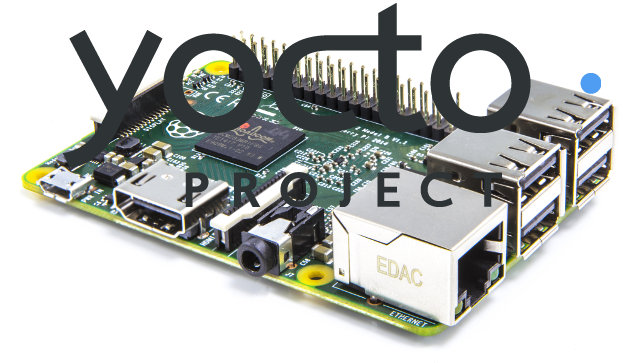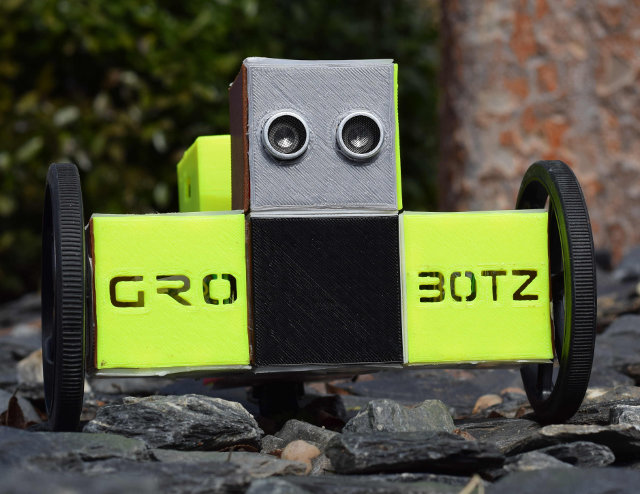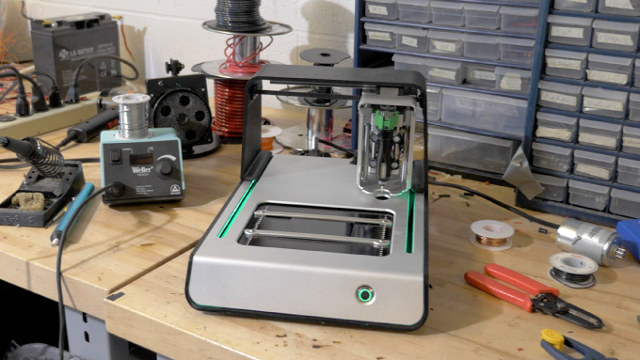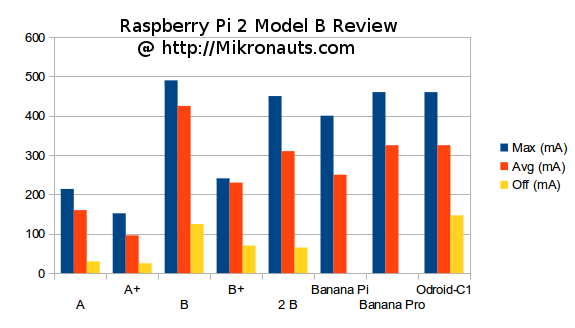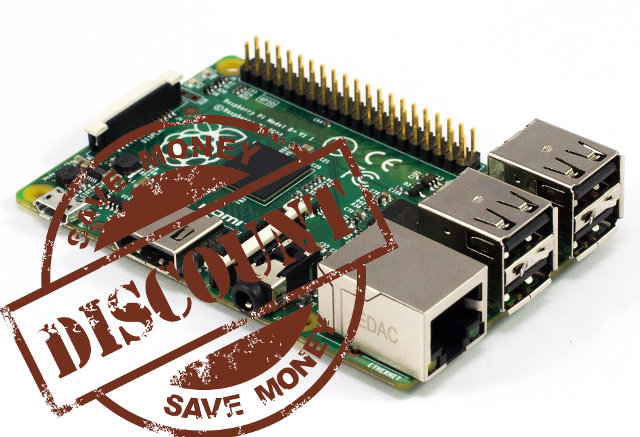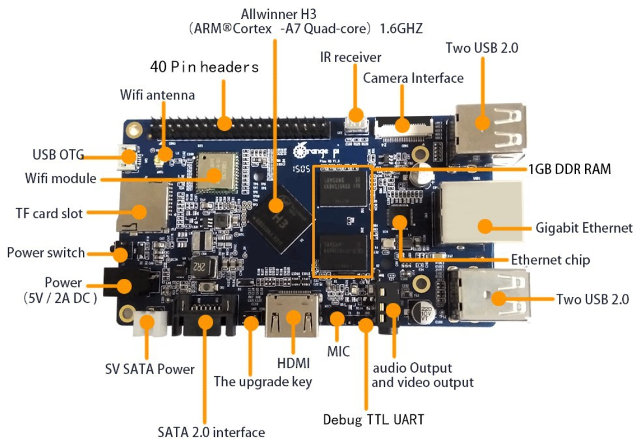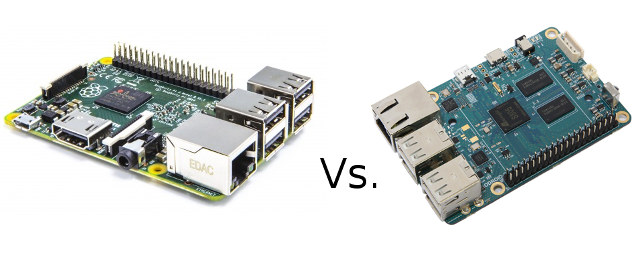I’ve read quite a few articles mentioning Docker recently, but never really looked into it. So what is Docker? The developers describe it as: Docker is an open platform for developers and sysadmins to build, ship, and run distributed applications. Consisting of Docker Engine, a portable, lightweight runtime and packaging tool, and Docker Hub, a cloud service for sharing applications and automating workflows, Docker enables apps to be quickly assembled from components and eliminates the friction between development, QA, and production environments. As a result, IT can ship faster and run the same app, unchanged, on laptops, data center VMs, and any cloud. In practice, it looks like a lightweight virtualization solution that facilitates apps distribution to different operating systems and hardware platforms. For example, if your development machine is running Ubuntu 14.04 and you’ve developed an app requiring Python 3.0, Docker should make it a breeze to it on […]
Build a Raspberry Pi 2 Minimal Image with The Yocto Project
The Yocto Project is a build system that allows developers to make custom Linux distributions matching their exact needs. I’ve already shown how to build a 12MB Compressed image for the Raspberry Pi with Yocto, but the Raspberry Pi 2 has recently been added to the project, so I’ve tried to build it too in a machine running Ubuntu 14.04. I’ll use poky since it’s the default, but you could also build the system for Angstrom or without distributions (OpenEmbedded Core only). The steps to get the code is just the same as for the Raspberry Pi:
|
1 2 3 4 5 |
mkdir yocto cd yocto git clone git://git.yoctoproject.org/poky.git cd poky git clone git://git.yoctoproject.org/meta-raspberrypi |
You just need to checkout master, and not any branch (like dizzy) since R-Pi 2 is not yet supported in any release. Initialize some environment variables and the build directory:
|
1 |
. oe-init-build-env build |
Now edit conf/local.conf with vim or nano to set the machine to raspberrypi2 instead of qemux86:
|
1 2 |
MACHINE ??= "raspberrypi2" GPU_MEM = "16" |
There are more Raspberry […]
GroBotz Interactive Robot Project is Made of Easy to Assemble Smart Blocks (Crowdfunding)
GroBotz makes me think of Lego applied to robotics. The project consists of modules such as motors, sensors, buttons, switches, or cameras that snap together in order to create a robot on wheels, games, toys, a musical instrument, or whatever idea you may have, and the hardware is then programmed using a graphical user interface. A Raspberry Pi board is used for the brain of the robot, and Microchip PIC MCUs for the smart blocks. The software is programmed in C# using Xamarin, the user interface is based on Unity, OpenCV is used for image processing, and during development a plastic part where printed with Makerbot, and schematics and PCB layout designed with CadSoft EAGLE. The company has now come up with a number of modules as shown in the picture below. Your robot can then be controlled over Wi-Fi with GroBotz app which works on Windows, Mac OS, iOs, […]
Voltera V-One is a Low Cost PCB Printer and Solder Paste Dispenser (Crowdfunding)
The traditional hardware development cycle involve sending PCB Gerber files to a manufacturer, wait a few days (or weeks), get the boards back, find and fix bugs, send a new revision of the gerber files to the manufacturer and so on. This wastes a lot of time, so PCB printers capable of handline single and dual layer PCBs have started to see the light of the day, for example with BotFactory Squink. The latter can also do pick and place, but costs over $3,500. Luckily if you’d like something cheaper, Voltera V-One will do many of the same tasks, for but for only $1,500. Voltera V-One specifications: Minimum Trace Width – 8mil (~0.2mm) Minimum Passive Size – 0603 (0402 for solder paste) Minimum Pin-to-Pin Pitch – 0.8mm (0.5mm for solder paste) Resistance – >12 mOhm/sq @ 70um height Max Heated Bed Temperature – 250C Heated Bed Ramp Rate – ~2C/s […]
Raspberry Pi, Banana Pi, and ODROID-C1 Boards Power Consumption
Mikronauts has recently reviewed MIPS Creator CI20, ODROID-C1, and Raspberry Pi 2 Model B. R-PI 2 review is especially interesting since this is the last one, and the reviewer goes to compare all Raspberry Pi models (A, A+, B, B+ and 2 B) with Banana Pi, Banana Pro, MIPS Creator CI20, and ODROID-C1 development boards. The benchmark results are good to know, and expected with ODROID-C1 the fastest of the bunch both in terms of CPU and storage performance, but here I’ll just share the results of his power consumptions testing. Since all platforms are powered by a 5V power supply, I’ve converted the results into watts. Model Max (W) Avg (W) Off (W) A 1.07 0.80 0.15 A+ 0.76 0.48 0.125 B 2.45** 2.12 0.62 B+ 1.20 1.15 0.35 2 B 2.25 1.55 0.325 Banana Pi 2 1.25 0 Banana Pro 2.3 1.62 0 Odroid-C1 2.3 1.62 0.735* * […]
Raspberry Pi Model B+ Can Now Be Purchased for About $30 Shipped
The Raspberry Pi maybe promoted as a $35 ARM Linux board, but in reality once you had taxes and shipping the price can be quite higher. For example on Element14 Thailand, I would have to spend 1,300 Baht ($40) + shipping, or even 1750 Baht ($54) to get the board. But since Raspberry Pi 2 launch, sales numbers for R-Pi model B+ have most likely dwindled, and some sellers are trying to get rid off stock. Some deals I have found or been tipped off: $30.29 on Amazon US. Free shipping in the US on orders over $35. $31 including shipping on Aliexpress $33.99 including shipping on Bangood $37.81 including shipping on DealExtreme $37.88 including shipping on Ebay If you know of other better or similar deal for the Raspberry Pi Model B/B+, feel free to leave a link in comments. Thanks to Onebir for the tip. Jean-Luc Aufranc (CNXSoft)Jean-Luc […]
Orange Pi Plus Development Board Gets Upgraded to Allwinner H3 Processor
Orange Pi boards were recently launched with a form factor similar to the Raspberry Pi Model B+, and featuring Allwinner A20 and A31s processors. Orange Pi Plus was initially fitted with Allwinner A31s processor, but Shenzhen Xunlong Software has now decided to use the latest Allwinner H3 quad core processor instead for this model, adding better CPU performance, and H.265 video decoding up to 4K @ 30 fps, likely at the cost of a slower Mali- 400MP2 GPU against the PowerVR SGX544MP used in Allwinner A31s. New Orange Pi Plus specifications: SoC – Allwinner H3 quad core Cortex A7 @ 1.6 GHz with ARM Mali-400MP2 GPU up to 600 MHz System Memory – 1GB DDR3 Storage – micro SD card slot, SATA interface (via a USB to SATA chip), unpopulated 8GB eMMC on the back of the board (despite picture, see comments section) Video Output – HDMI, AV port Audio […]
Raspberry Pi 2 / ODROID C1+ Development Boards Comparison
Raspberry Pi 2 Model B board has just been released, and although it’s not a direct answer to ODROID-C1, as Broadcom started the design for BCM2836 SoC for RPI2 a long time ago, both low cost development boards have similar specifications, with a quad core processor, 1GB RAM, Ethernet, and four USB ports, as well as the exact same price: $35. So I’ve decided to compare both in details to find out the actual differences, and which one may be more suitable to a particular application. Let’s get straight to the comparison table. [Updated on November 24 to use ODROID C1+ instead of ODROID C1] Hardkernel ODROID C1+ Raspberry Pi 2 Model B Comment Processor Amlogic S805 quad core Cortex A5 @ 1.5 GHz (Overclockable to 1.7 GHz or more) Broadcom BCM2836 quad core Cortex A7 @ 900 MHz (Overclockable to 1.1GHz or more) Despite the architecture advantage for Cortex […]



